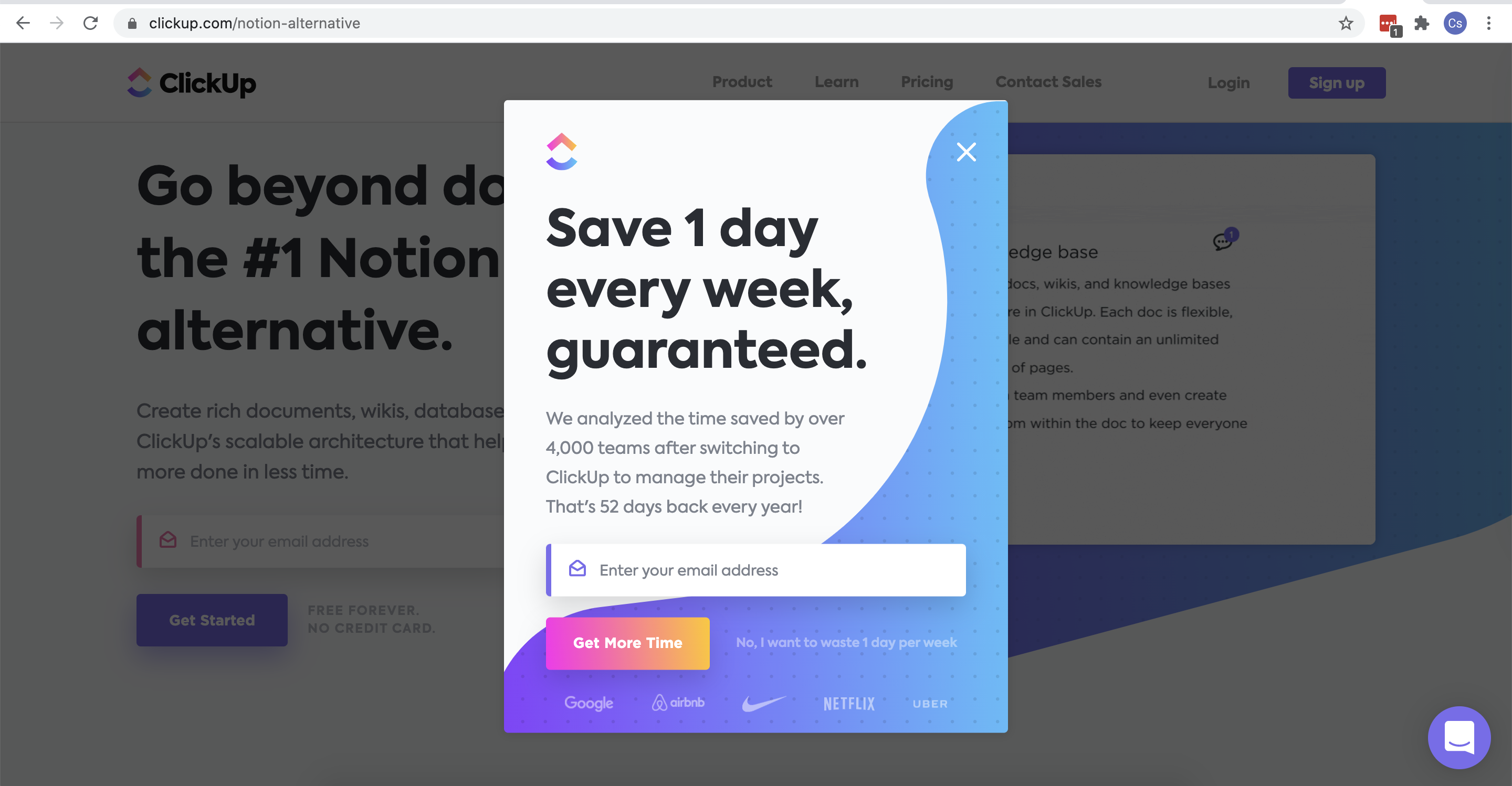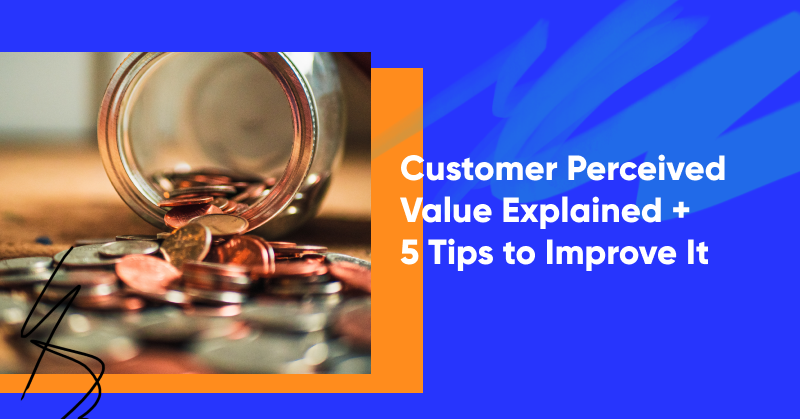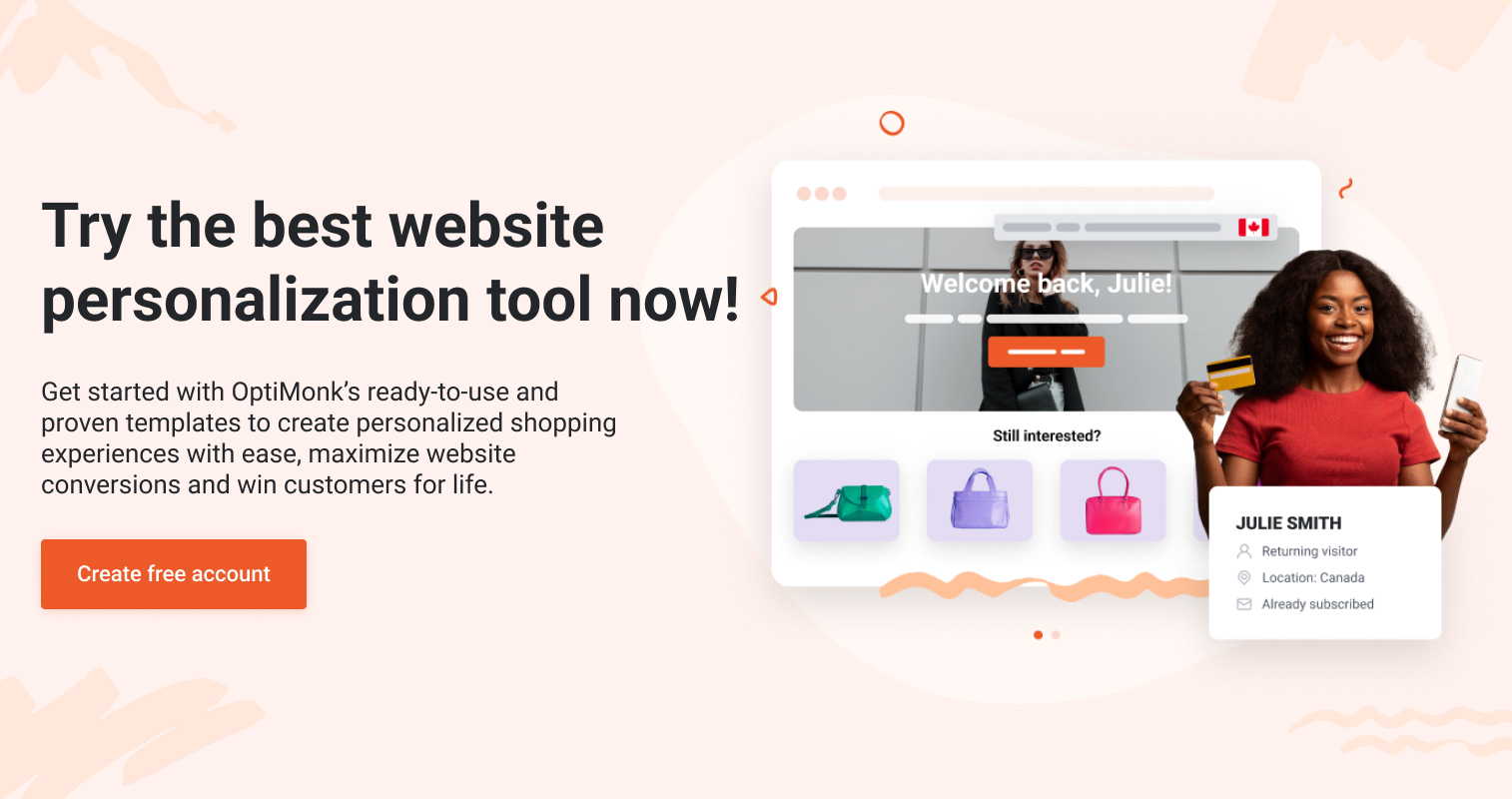Customer perceived value is the technical term for how much monetary value a consumer thinks a product or service is worth (relative to how much it costs them).
It’s important to note that this number is different from a product’s price, since a customer can think that the sticker price is either too high or too low relative to its perceived value.
Within this difference between the customer perceived value and the product’s actual cost lies a world of complexity that has a deep impact on the sales process.
In this article, we’ll define customer perceived value (or CPV) in more detail, and then get right into how you can increase the value your products have in the minds of your customers. The higher the customer perceived value of the products you’re selling, the better for you.
Let’s get started!
What is customer perceived value?
Defining customer perceived value can be a little bit difficult, partially because it’s such a broad topic.
On the simplest level, the question of how much a customer values your product has to do with how well it performs the function it’s intended for (and how important that function is).
However, we can push the idea of CPV further and look at it as a comparison between how much someone thinks a product is worth to them and how much it actually costs.
This second perspective allows us to see that CPV directly relates to whether a customer thinks a product is a good deal, fairly priced, or overpriced. For example, when the CPV of a product is higher than its price, it seems like the benefits of a product outweigh how much it costs.
What’s the difference between real value, customer value, and customer perceived value?
Real value is a measure of how much it actually costs to produce (and market, distribute, etc.) the actual product. This is basically a tallying up of the expenses that a business has in delivering a particular product to their customers.
As discussed, CPV is a more philosophical idea relating to what the customer thinks about the benefits of a product and how much those are worth.
Finally, customer value can be defined as the actual benefit that a product delivers to consumers (independent of what they think about it).
Now that we’ve cleared all that up, let’s take a look at how to calculate customer perceived value.
How to calculate the customer perceived value?
Once you have an idea of the benefits customers think a product has for them (and we’ll talk about how to figure this out in a moment), it’s quite easy to figure out what the customer perceived value of a product is.
All you need to do is use the following formula:
Customer Perceived Value = Total Perceived Benefits – Total Perceived Cost

Notice that you don’t simply subtract the cost of an item from the total perceived benefits, instead you subtract the “total perceived cost.” This is a small difference that takes into account the additional costs someone might experience when purchasing a product.
For instance, having to drive to a distant store to pick up a purchase increases the perceived cost, while free home delivery avoids that extra cost.
As you can see, CPV takes all the perceived costs and benefits to a consumer into account.
Why focus on customer perceived value?
There are a number of benefits to increasing the CPV of your products.
Think about some of the most famous brands in the world—don’t their products have a little “extra” value that makes people talk about them? It’s true for luxury fashion brands like Gucci and a tech companies like Apple.
Here are the 3 main benefits of having a strong customer perceived value:
1. More conversions and sales
When the CPV of a product is high, it means that people feel like they’re getting a good deal. This makes it easier for your customers to justify making a purchase.
The more you focus on your customer’s needs and personalize their experience, the easier it is for them to perceive value in your products.
2. Better customer reviews
Products with a high perceived value are more likely to be reviewed (and get better reviews) online. Customer reviews shine a light on your products and services, and increase other potential customers’ willingness to buy.
3. Recommendations and referrals
You want your sales to result in satisfied customers, because they recommend your business or online store to others. Encouraging this kind of positive word of mouth is a great way of expanding your customer base, turning your customers into brand ambassadors!
Customers perceive value in 3 key factors
When it comes to increasing CPV, you need to know about the factors that come into play when a customer thinks about a company’s products.
Let’s go through the 3 key factors that go into a customer’s perception of a product’s value.
1. Physical value
A product’s physical value relates, as you would expect, to the physical characteristics of the product.
This can be evaluated in a number of different ways depending on the type of product and the consumer’s expectations of it.
For instance, a product made from high-quality materials will have a higher customer perceived value than one made from low-quality materials.
Sometimes the size of a product will make a difference. If we think about laptops, for instance, consumers will always value a lighter computer more than a heavier one.
2. Logical value
How much logical value a product has depends on how useful it is to consumers.
Once again, products and services can be useful in lots of different ways. It could be by giving customers a benefit they can’t get anywhere else or saving them lots of time in their daily routine.
3. Emotional value
Customers also connect to products on an emotional level. This is especially important because it can differentiate your offerings from your competitors’ (even when they’re very similar).
Maximizing the goodwill that customers feel towards your brand is the best way to increase the emotional aspect of perceived value.
This is where customization and personalization come in, since these ecommerce tactics allow you to treat people as individuals rather than numbers, building a personal connection.
You can also enhance the emotional bond consumers have with your brand by incorporating techniques from conscious capitalism, such as making a charitable donation from a portion of your profits.
These kinds of steps can really enhance a company’s reputation.
Know your target audience
Different groups of customers will perceive the value of products in different ways. After all, “don’t try to sell burgers to vegans!”
Put simply, you don’t want to try to sell products or services to people who are not part of your target audience.
You should always try to keep track of your customers’ value perception. This means knowing which aspects of your products are perceived to be the most beneficial. Surveys and focus groups are both great ways to test the market and find out what your customers care about most.
If you have different segments that value different product features, you can use personalization to highlight the appropriate benefit to each consumer segment.
5 tips to improve your customer perceived value
As we’ve seen, it’s not always about the physical or logical value of a product. You can improve CPV by concentrating on other factors like time saved (or spent), convenience, and price paid.
Here are some practical tips to boost your customers’ evaluation of your products:
1. Value your customers’ time
Everyone is busy, so one of the best ways to increase perceived value is by highlighting how products and services save time.
Your marketing should be tailored to your target audience and explain how making a purchase will benefit them.
It’s equally important for your website to be easy and quick to use. Recall that the perceived cost of an item isn’t just about the money, it also includes the time that a customer has to spend obtaining it.

If your website is time-consuming and doesn’t have personalized features, they might not stick around to make a purchase.
2. Smart pricing
The price of the product is still an important factor in customer perceived value (even more so with rising inflation).
However, it’s not as simple as just saying that a lower price is the best way to increase CPV. Sometimes, setting a higher price can actually make a service or product seem more valuable.
3. Gain a great reputation
Earning a solid reputation for your brand is crucial.
Your marketers can show customer testimonials, partner with other brands, and focus more on customer support through the use of a small business VoIP system, ensuring efficient and effective communication.
When potential customers see that others are using your products and they work well, that social proof leads to a higher CPV.
4. Build an emotional connection
The emotional benefits that come from owning a product are particularly important for younger generations. A Gen-Z customer expects companies to act ethically and responsibly–in other words, quality products aren’t all that they care about.
Make sure that your company representatives share similar values to your younger target audience, and that you take a stand on important social issues.
Remember, the issues you address should be related to the business you’re in. For example, it would be a great move for a fashion company to take a stand against fast fashion, like Swap Society does.

5. Choose the right words
All the marketing tips that we’ve suggested to increase perceived value rely on communicating complex ideas to your customers.
In order to do that, you’ve got to adopt their language. Communicate your values and what they gain by choosing your product or service using words that will get through to them.
How to measure your success?
Once you’ve taken steps to boost your CPV, it’s time to measure your success. Increasing your CPV should lead to more conversions, more sales, and more customer satisfaction.
Let’s see how you can measure your success:
1. Check and monitor online activity
You should track your online sales before and after you change your messaging to increase your CPV.
If you’ve been successful and consumers are seeing your products as more valuable, more of them should be making purchases from your company. That means you’ll see an increase in sales and conversions.
2. Track customer satisfaction
In addition to keeping track of sales and conversions, you should also follow what happens after you make a sale.
The first way to do this is by paying close attention to your reviews and ratings. When you increase your CPV, you should see a spike in the rating you get from the average buyer. Even if the quality of a product or service hasn’t changed, the fact that people perceive it to be more valuable will increase their overall satisfaction with it. Additionally, the quality control software can help ensure that the quality of your products and services meet the standards you’ve set.
You can also follow up with your customers directly over the phone or by email.
Key takeaways
As we’ve seen in this article, customer perceived value is key to running a profitable business online. When you’re able to improve your CPV, you’ll have more happy customers than before.
Offering quality products is the cornerstone of a great CPV, but there are other ways for companies to help customers value their products more.
Website personalization is an essential part of boosting CPV. If you’d like to increase the value of your products in your customers’ minds, give OptiMonk’s advanced personalization software a try!













